29. Intelligent Customer Preference Engine with Real-time ML systems, Manoj & Praveen, Walmart Lab
https://www.youtube.com/watch?v=WPKWRXU0bOQ&ab_channel=Tecton (opens in a new tab)
-
Customers are increasingly omnichannel
We need to understand behaviour across the whole channels
Personalization plays a key role throughout the customer journey, and also after the purchase in case of recommendation
Dozen of recommenders in play in the background, to make baskets very quickly. Adding each item can be time-consuming, so personalisation is right from the home page.
Product discovery is another recommender use case.
Aside from product impressions, we also prioritize non-product impressions like banners, to show that we’re to help find items they’re looking for.
-
2 types of recommendations: baskets and checkout/last-call (candies, batteries etc).
For last-call, we don’t want customers going back to the discovery again, but go ahead and checkout
-
Flywheel
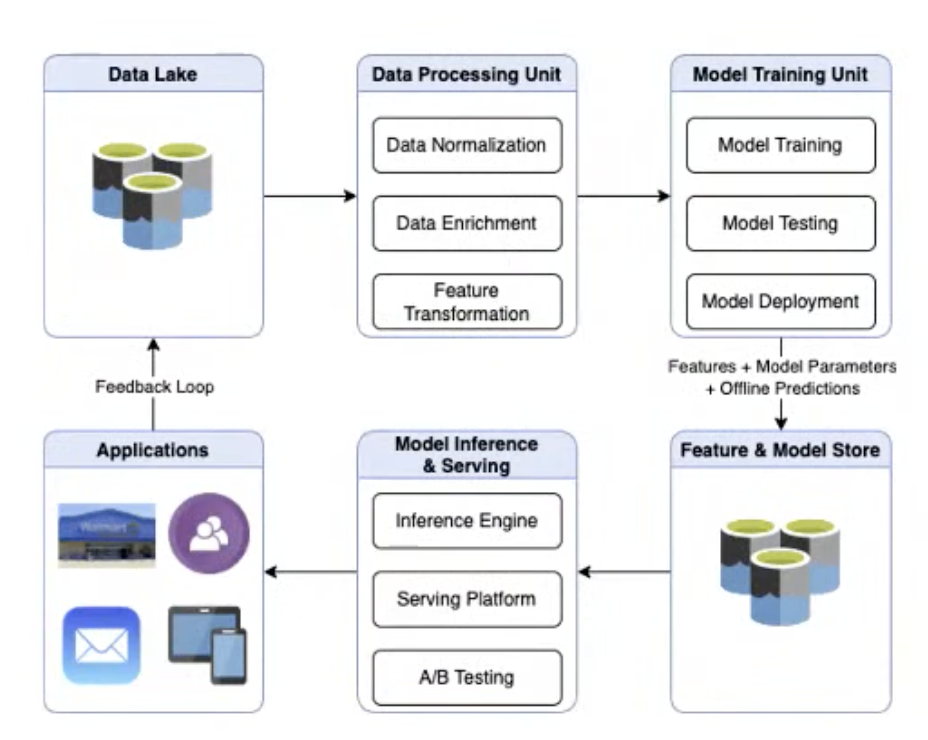
-
1:1 micro intent: for a given time, for a given customer
ex of micro intent: Party supplies, then ice cream, then gift cards
detecting micro-intent with the inference engine
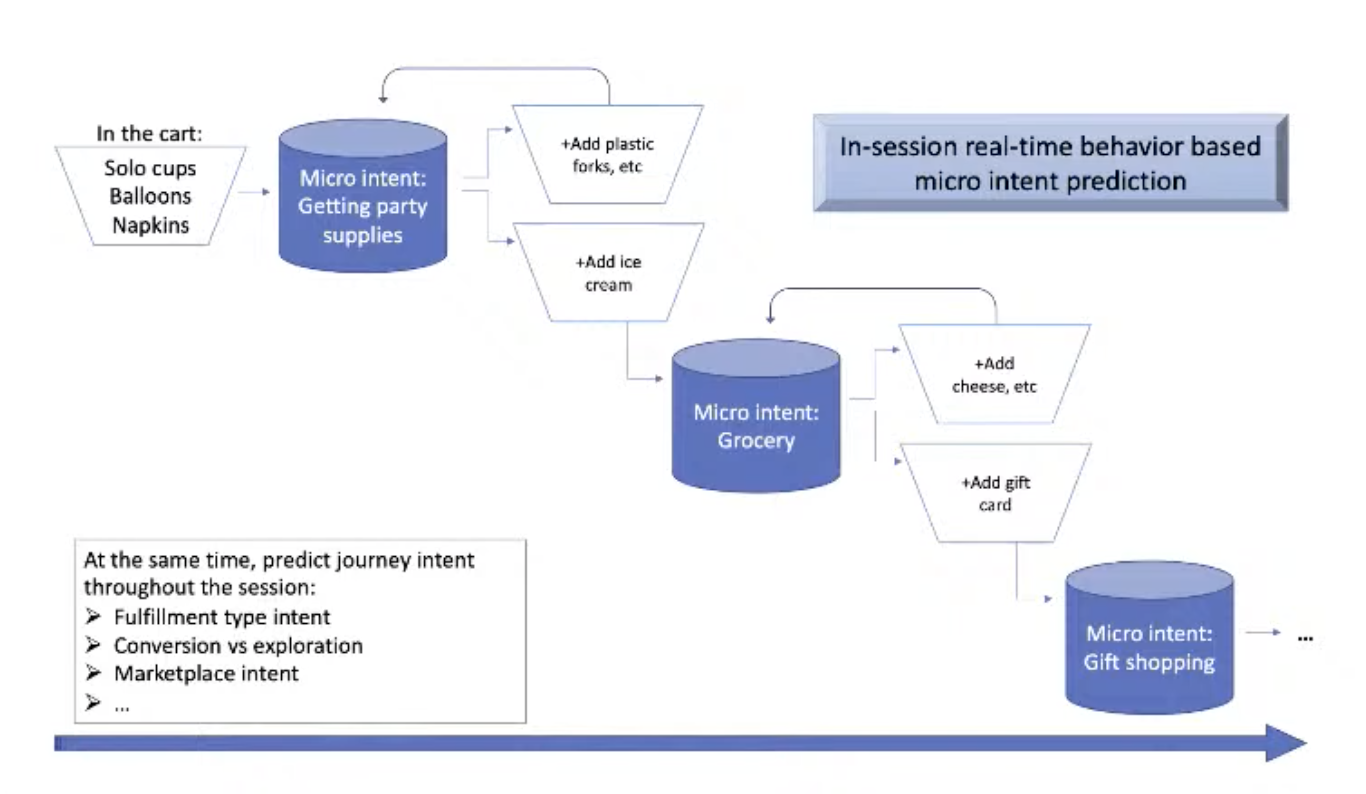
-
Features

Variable time windows for online predictions
-
Ranking using some context
If a user already has an iPhone and search for AirPods, we’ll propose Apple ones first.
-
Recommender flow
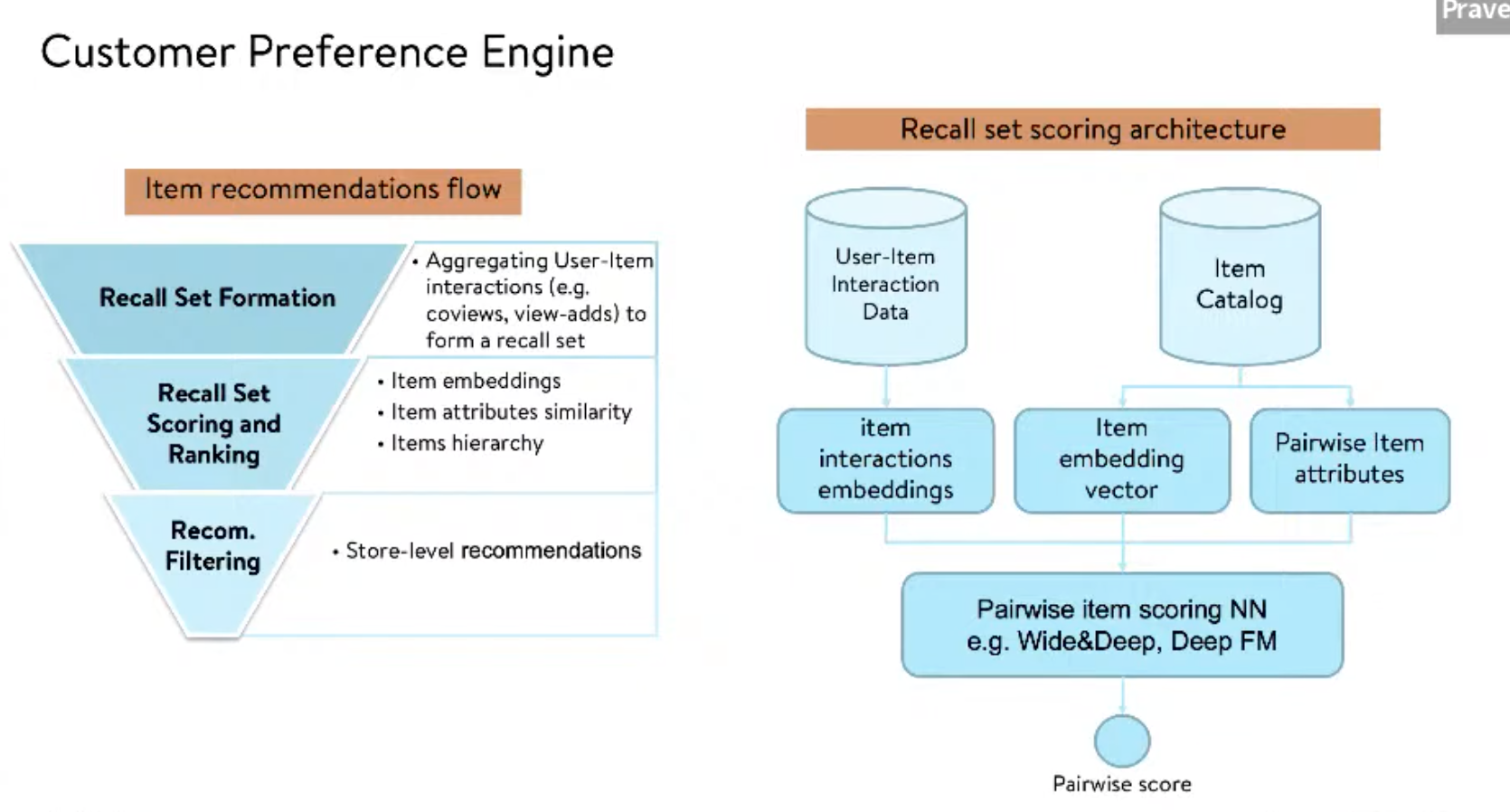
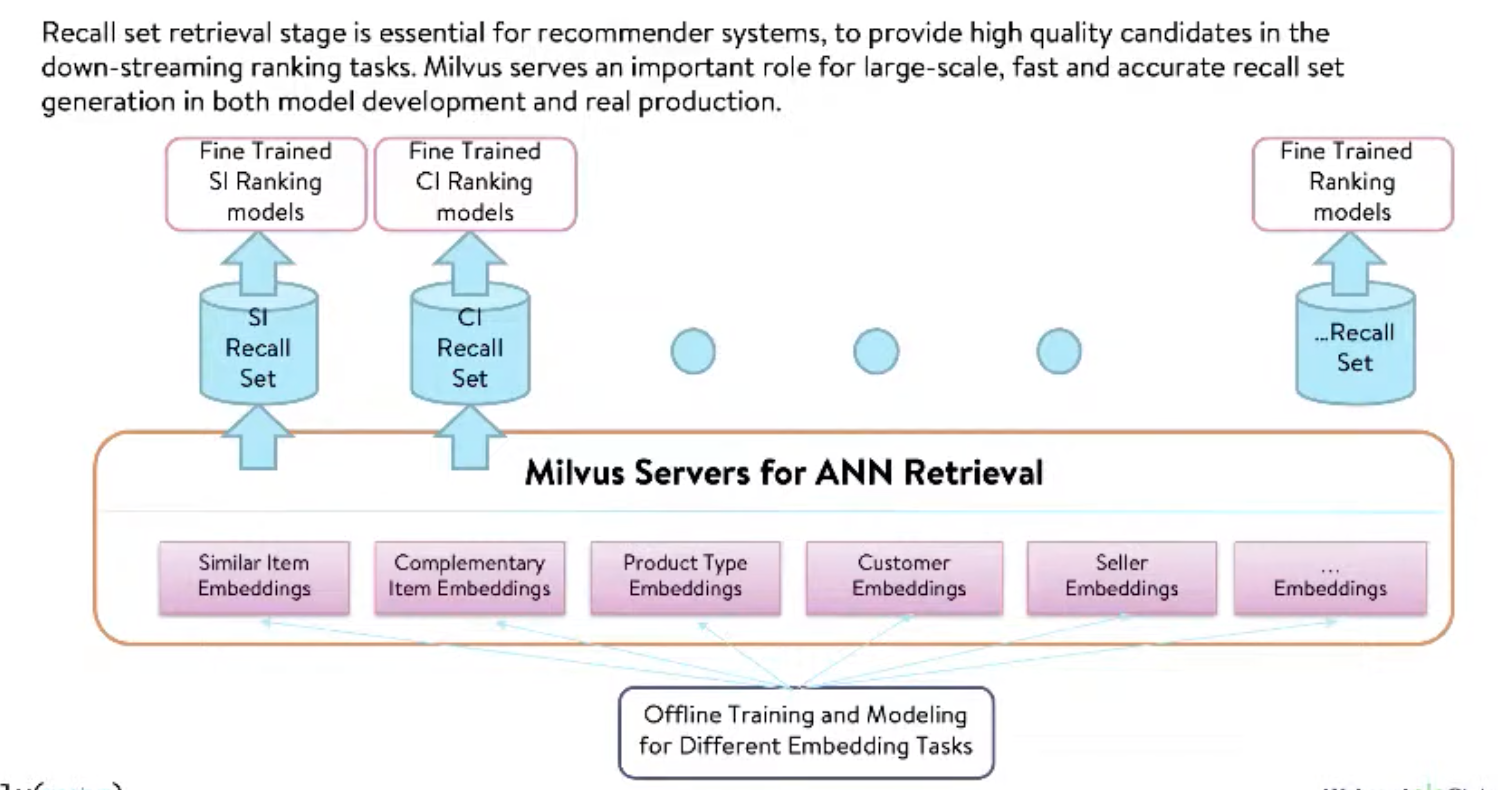
-
Feature and model store
Model store allows to A/B test and to iterate quickly on different models
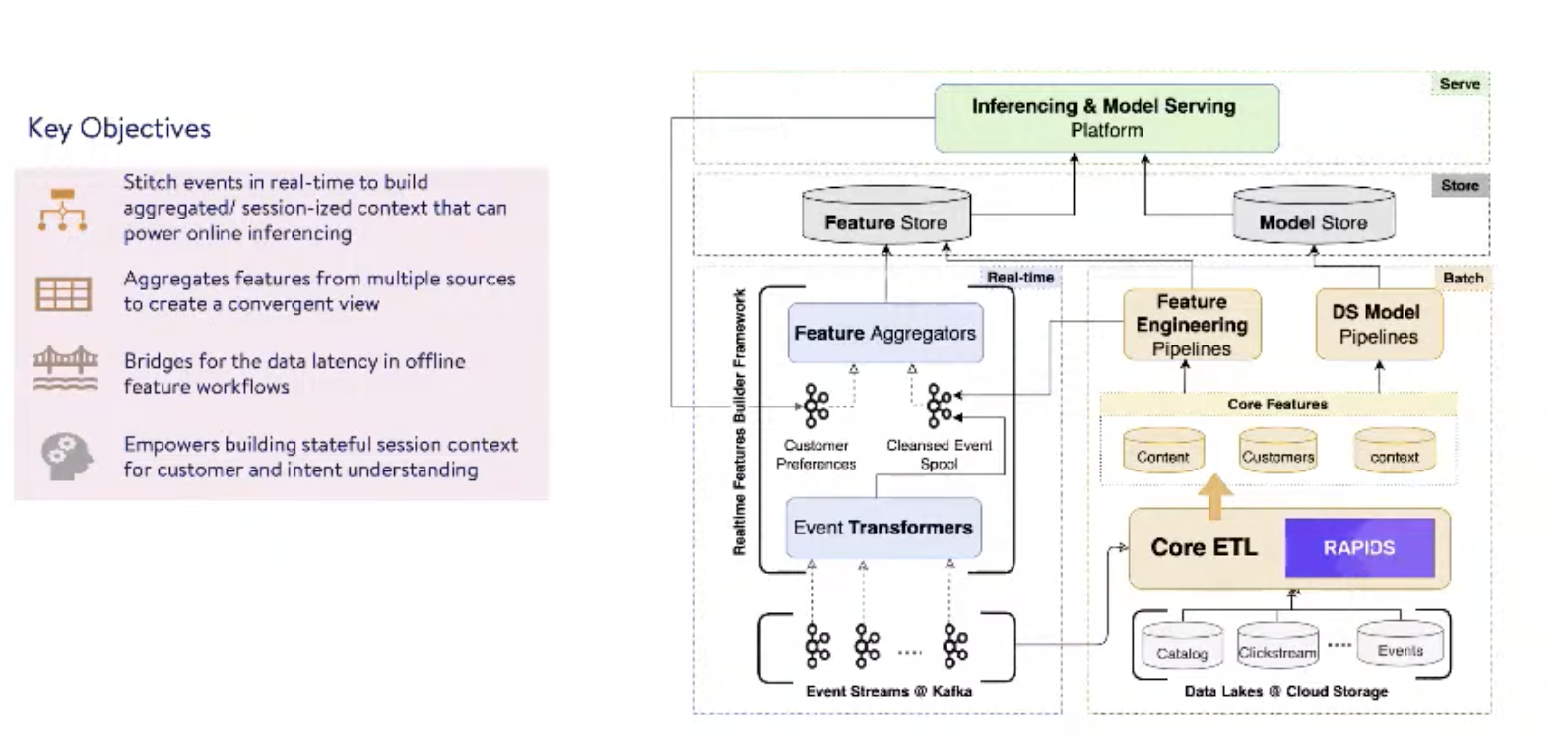
-
Online inferencing platform
Multi-model, DS can bring their framework and model on it and spin up a microservice easily
Can tie different models together in an ensemble fashion
Inference graph is very high-level: expose human-readable API to our clients. Most of the time, embedding and transformations are only understandable by the fews who built the model. Given a feature, it can bundle features together using the feature store.
Post-processing is a filtering mechanism of the recall set, response to the client
Real-time platform is both async and real-time for different use-cases.
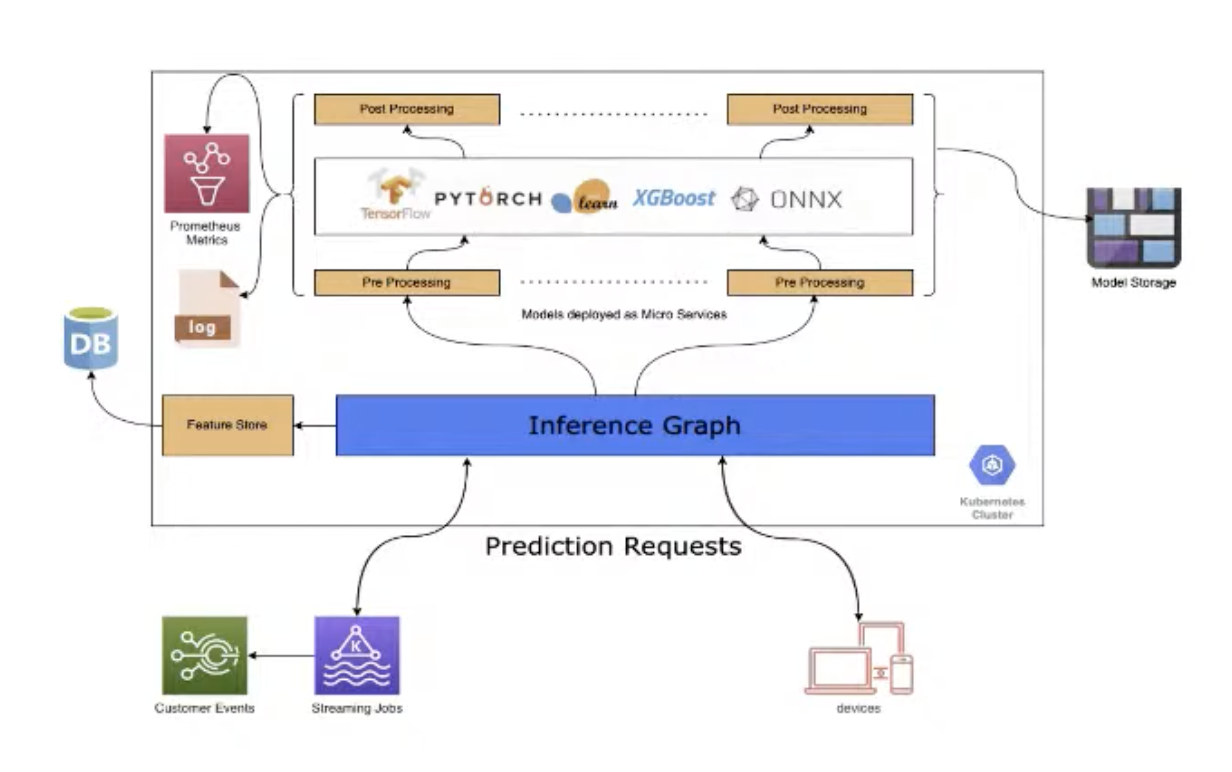
-
Q&A
-
Does the feature store contain pre-computed features for online input? Or differents need to speed up inference.
Yes precomputed. Feature store has many purposes: saving compute costs, storing final and intermediate features for reusability purposes.
-